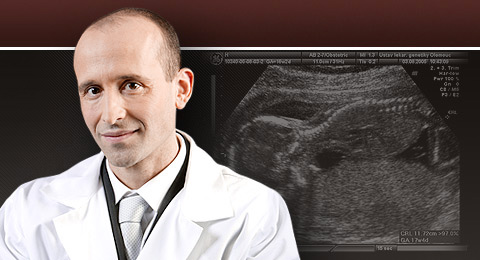Studničková M., Ľubušký M., Šimetka O., Pětroš M., Procházka M., Ordeltová M., Langová K.Vliv věku rodičky, parity, délky trvání těhotenství a hmotnosti plodu na fetomaternální hemoragii při spontánním porodu. Čes. Gynek., 2012, 77 (3), s. 256-261. (The influence of maternal age, parity, gestational age and birth weight on fetomaternal haemorrhage during spontaneous delivery)
ABSTRACT
Objective: Determine the influence of maternal age, parity, gestational age and birth weight on the volume of fetal erythrocytes which enter the maternal circulation during spontaneous delivery. Determining these parameters would enable improving the guidelines for RhD alloimmunization prophylaxis. Design: Prospective clinical study. Setting: Department of Obstetrics and Gynecology, University Hospital, Olomouc. Methods: A total of 2413 examinations were performed. The amount of fetal erythrocytes entering maternal circulation during uncomplicated spontaneous delivery of one fetus was determined by flow cytometry using the BDFACSCanto cytometer (Becton Dickonson International). Laboratory processing: Fetal Cell Count kit (Diagnosis of Feto-maternal transfusion by flow cytometry), IQ Products, IQP-379. Calculation of total volume of fetal erythrocytes entering maternal circulation: Scientific Subcommittee of the Australian and New Zealand Society of Blood Transfusion. Guidelines for laboratory assessment of fetomaternal haemorrhage. 1st ed. Sydney: ANZSBT, 2002: 3-12. Results: The average maternal age when FMH ≤ 1.8 ml (95 perc) was 29.4 years vs. 29.1 years when FMH > 1.8 ml, median 30 years in both groups, the difference was not statistically significant (p = 0.501). The average gestational age when FMH ≤ 1.8 ml (95 perc) was 275.3 days vs. 276.9 days when FMH > 1.8 ml, median 278 days (39 weeks +5 days) vs. 276 days (39 weeks + 3 days), the difference was not statistically significant (p = 0.849). The average birth weight when FMH ≤ 1.8 ml (95 perc) was 3312 g vs. 3353 g when FMH > 1.8 ml, median 3340 g vs. 3330 g, the difference was not statistically significant (p = 0.743). FMH > 1.8 ml (5 perc) was present in 4.1% of primiparas (42/1023), in 4.2% of secundiparas (44/1050) and in 5.3% of multiparas (18/340), the difference was not statistically significant (p = 0.607). The difference in maternal age, parity, gestational age and birth weight were also not statistically significant for fetomaternal hemorrhage FMH > 2.1 ml (2.5 perc), FMH > 2.5 ml (n = 25), FMH > 5 ml (n = 5). Conclusion: Maternal age, parity, gestational age and birth weight does not present a risk factor for excessive fetomaternal hemorrhage during spontaneous delivery. Key words: fetomaternal haemorrhage, fetomaternal characteristics, spontaneous delivery, anti-D IgG, RhD alloimunization.

Contact
Professor Marek Lubusky, MD, PhD, MHA
THE FETAL MEDICINE CENTRE
Department of Obstetrics and Gynecology
Palacky University Olomouc, Faculty of Medicine and Dentistry
University Hospital Olomouc
Zdravotníků 248/7, 779 00 Olomouc, Czech Republic
Tel: +420 585 852 785
Mobil: +420 606 220 644
E-mail: marek@lubusky.com
Web: www.lubusky.com


